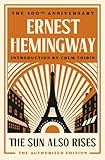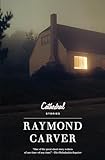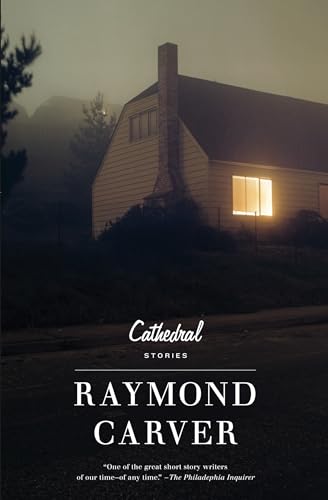For a while now, I’ve tried to think of an apt analogy for the relationship between writers and editors; the best thing I’ve come up with so far is this: writers are to editors as Scarlett O’Hara is to Rhett Butler–the former, passionate to the point of temporary blindness; the latter, surefooted and collected, all the while attempting pragmatism, though it must be passion, in the end, that drives them in the same direction.

 Maybe it’s not a perfect analogy. In fact, in my experience, more often than not, writers are grateful for a second set of eyes committed to improving the work. But as history will have it, the most fascinating of the writer-editor relationships are the most contentious, the boldest edits the most memorable: Maxwell Perkins cut 65,000 words of Thomas Wolfe’s Look Homeward, Angel; T.S. Eliot’s The Wasteland was published at about half of its original length based largely on Ezra Pound’s edits, and the deft opening of Hemingway’s The Sun Also Rises was a result of F. Scott Fitzgerald’s criticism. For all the ego warfare, the three sets of relationships survived, if tenuously. But more notably, works that were deemed “unreadable” (to borrow Perkins’ description of the early Wolfe) and “unpublishable” (to quote Perkins on the first draft of The Sun Also Rises,) emerged as some of the most lasting pieces of 20th century American literature.
Maybe it’s not a perfect analogy. In fact, in my experience, more often than not, writers are grateful for a second set of eyes committed to improving the work. But as history will have it, the most fascinating of the writer-editor relationships are the most contentious, the boldest edits the most memorable: Maxwell Perkins cut 65,000 words of Thomas Wolfe’s Look Homeward, Angel; T.S. Eliot’s The Wasteland was published at about half of its original length based largely on Ezra Pound’s edits, and the deft opening of Hemingway’s The Sun Also Rises was a result of F. Scott Fitzgerald’s criticism. For all the ego warfare, the three sets of relationships survived, if tenuously. But more notably, works that were deemed “unreadable” (to borrow Perkins’ description of the early Wolfe) and “unpublishable” (to quote Perkins on the first draft of The Sun Also Rises,) emerged as some of the most lasting pieces of 20th century American literature.
Most recently, Carol Sklenicka’s new biography of Raymond Carver, Raymond Carver: A Writer’s Life, dredges up yet again what has perhaps become the messiest of all writer-editor relationships, between the Carver and his editor, Gordon Lish. Prior to Sklenicka’s book, in 1998 the New York Times published D.T. Max’s unprecedented account of Lish’s extensive edits followed by an interview with the embittered editor. What was established in the article and is readdressed in Sklenicka’s book is that Lish did not edit Carver’s monumental collection; rather, he commandeered it. Ten out of thirteen endings were changed, stories were drastically cut, and Lish took liberties with rewriting, to say the least.
 I first read What We Talk About When We Talk About Love, the collection most notoriously edited by Lish, nearly twenty five years after its 1981 debut, and despite all the debate over who’s responsible for its brilliance, it remains one of my all-time favorite short story collections. And so during the time I was discovering that Carver wasn’t so much an author of this tremendous book, but an author in the shadow of it, a sense of indignation burgeoned inside of me. To quote D.T. Max: “I wanted Carver to win, whatever that might mean. He had shown writers the value of measuring your words.”
I first read What We Talk About When We Talk About Love, the collection most notoriously edited by Lish, nearly twenty five years after its 1981 debut, and despite all the debate over who’s responsible for its brilliance, it remains one of my all-time favorite short story collections. And so during the time I was discovering that Carver wasn’t so much an author of this tremendous book, but an author in the shadow of it, a sense of indignation burgeoned inside of me. To quote D.T. Max: “I wanted Carver to win, whatever that might mean. He had shown writers the value of measuring your words.”
The thing is, as I’ve gone back to the collection over the years, I’ve gone back and forth on why I’d ever adopted this sense of outrage over Lish’s edits. It’s part human compassion, sure–you want Carver, the once alcoholic janitor, to be the genius his book suggests he is. But why is it upsetting when it’s the editor that was in large part responsible for it? Every writer needs an editor, and if Lish took more artistic license than most, he was doing his job–namely, he was making the changes he thought necessary to make the book as good as it could be. Does it matter that he manhandled the manuscript if it’s better for it? Even Carver, in his letters to Lish published by the New Yorker in 2007 acknowledges that Lish “made so many of the stories in this collection better, far better than they were before.”
His reluctance to have the edited versions published was out of fear that his peers–Richard Ford and Tobias Wolff among them–that had seen earlier drafts would hardly recognize the stories as the ones Carver had originally written. “Maybe if I were alone, by myself, and no one had ever seen these stories,” his letter explains, “maybe then, knowing that your versions are better than some of the ones I had sent, maybe I could get into this and go with it.”
As we know now, Lish got his way by ignoring Carver’s pleas. Thus, the point of contention among the old friends: What We Talk About transformed Carver into a darling of the literary world, and despite his last-minute reservations and desperation, he didn’t deny himself the glory the book won him, and he remains one of the most revered writers of the 20th century. From the New Yorker article, a quote from Tess Gallagher, with whom Carver lived after his divorce from his first wife until his death in 1988:
What would you do if your book was a success but you didn’t want to explain to the public that it had been crammed down your throat?…He had to carry on. There was no way for him to repudiate the book. To do so would have meant that it would all have to come out in public with Gordon and he was not about to do that. Ray was not a fighter. He would avoid conflict because conflict would drive him to drink.
 As Carver’s celebrity grew, so did his confidence; Cathedral came out two years later, and at Carver’s behest, Lish hardly touched it. If it’s not the monument What We Talk About is, it is his most decorated work, with a Pulitzer and National Book Critics Circle Award nomination, and is generally regarded as Carver’s “truer” work. While I certainly agree that it contains some masterful fiction, I stand by my preference for What We Talk About. What some critics and peers have called greater “heart” in Cathedral Lish referred to as Carver’s “creeping sentimentality,” and while the subject matter of a middle class in ruins remains undeniably Carverian, the tone takes a noticeable shift–to put it one way, there is optimism in the latter book, where the prior is renowned for its lack of it.
As Carver’s celebrity grew, so did his confidence; Cathedral came out two years later, and at Carver’s behest, Lish hardly touched it. If it’s not the monument What We Talk About is, it is his most decorated work, with a Pulitzer and National Book Critics Circle Award nomination, and is generally regarded as Carver’s “truer” work. While I certainly agree that it contains some masterful fiction, I stand by my preference for What We Talk About. What some critics and peers have called greater “heart” in Cathedral Lish referred to as Carver’s “creeping sentimentality,” and while the subject matter of a middle class in ruins remains undeniably Carverian, the tone takes a noticeable shift–to put it one way, there is optimism in the latter book, where the prior is renowned for its lack of it.
Though Sklenicka’s biography raises the issue of Carver’s true identity as a writer once again, after all is said and done, the fear of his being exposed as a no-talent buoyed by his editor is irrational. It’s been over ten years since Lish’s heavy hand has been revealed, and Carver’s place among the masters of short fiction still stands. On the other hand, Lish has taken something of a beating for it; “I can only be despised for my participation,” he told Max during the interview. He may always be revered as an editor and credited with launching the careers of writers like Richard Ford and Amy Hempel who emerged in Carver’s wake, but in an abstract sense, Lish–or rather, his aggressive editorial approach–is easy to demonize. He expressly went against Carver’s wishes and instead did what he thought was best. He doesn’t seem like a terrifically nice guy, albeit pretty funny (see The Believer interview excerpt.) But niceness is, by and large, irrelevant to art.
I certainly don’t mean to suggest that editors ignore their writers’ requests altogether, but in this particular instance, Lish usurped Carver’s work, and with it, some of his identity. It was traumatic at times for both parties, but in terms of art and aesthetic, wasn’t it worth it? There will be those that disagree that preservation of the artist’s vision is secondary to the art itself, but ultimately, art exists to affect, and the greater the affect, the greater the art, regardless of who’s responsible for it.






